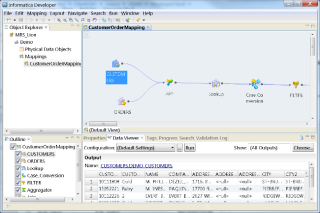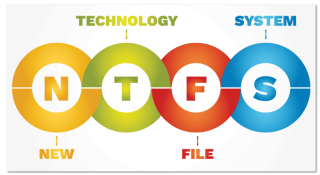Cómo instalar Vtiger CRM Open Source Edition en CentOS 7
Aprende cómo instalar Vtiger CRM, una aplicación de gestión de relaciones con el cliente, en CentOS 7 para aumentar tus ventas y mejorar el servicio al cliente.
Redmine is a free and open source, web-based project management tool. It is written in Ruby on Rails and supports multiple database servers for storing the database. It is a feature-rich application supporting multiple projects, role based ACL and an issue-tracking system. It also has Gantt chart and calendar support, file management, per project wiki and forum, as well as many other features. It supports version control systems such as Git, SVN or CVS. It is also multilingual, supporting as many as 49 languages.
For this tutorial, we will use 192.168.1.1 as the public IP address and redmine.example.com as the domain name pointed towards the Vultr instance. Please make sure to replace all occurrences of the example domain name and IP address with the actual one.
Update your base system using the guide How to Update Ubuntu 16.04. Once your system has been updated, proceed to install the dependencies.
Redmine is written in Ruby on Rails, thus we will require Phusion Passenger to integrate with the Apache web server to serve the application.
Install Apache.
sudo apt -y install apache2 apache2-dev libcurl4-openssl-dev
To build the Ruby and Passenger, we will need some development tools as well. Install the required tools.
sudo apt -y install imagemagick libmagickwand-dev git build-essential automake libgmp-dev
Redmine supports multiple types of database servers such as MySQL, PostgreSQL, and MSSQL. In this tutorial, we will use PostgreSQL to host the Redmine database server.
PostgreSQL is an object-relational database system. The default Ubuntu repository contains an old version of PostgreSQL, so add the PostgreSQL repository to the system.
echo "deb http://apt.postgresql.org/pub/repos/apt/ xenial-pgdg main" | sudo tee /etc/apt/sources.list.d/pgdg.list
wget --quiet -O - https://www.postgresql.org/media/keys/ACCC4CF8.asc | sudo apt-key add -
sudo apt update
Install the PostgreSQL database server.
sudo apt -y install postgresql
Start the PostgreSQL server and enable it to start automatically at boot time.
sudo systemctl start postgresql
sudo systemctl enable postgresql
Change the password for the default PostgreSQL user.
sudo passwd postgres
Log in as the PostgreSQL user.
sudo su - postgres
Create a new PostgreSQL user for Redmine.
createuser redmine
You are allowed to use any username instead of redmine. PostgreSQL provides the psql shell to run queries on the database. Switch to the PostgreSQL shell.
psql
Set a password for the newly created user for the Redmine database.
ALTER USER redmine WITH ENCRYPTED password 'DBPassword';
Replace DBPassword with a secure password. Create a new database for the Redmine installation.
CREATE DATABASE redmine WITH ENCODING='UTF8' OWNER=redmine;
Exit from the psql shell.
\q
Switch to the sudo user.
exit
Install a few more required PostgreSQL dependencies.
sudo apt -y install libpqxx-dev protobuf-compiler
We will install the latest version of Ruby using RVM. It is used to install and manage multiple versions of Ruby.
Add the RVM repository.
sudo apt-add-repository -y ppa:rael-gc/rvm
sudo apt update
Install RVM.
sudo apt -y install rvm
As we need to install Ruby system wide, we will switch to the root user temporarily.
sudo -i
Update the environment variables.
echo "source /etc/profile.d/rvm.sh" | tee -a /etc/profile
source /etc/profile.d/rvm.sh
Install the latest version of Ruby.
rvm install 2.5.1
Note: If you are using a different version of Ruby, make sure to update the Ruby path accordingly.
Use the installed version of Ruby.
rvm use 2.5.1 --default
You can verify its version.
ruby -v
You will see a similar output.
root@vultr:~# ruby -v
ruby 2.5.1p57 (2018-03-29 revision 63029) [x86_64-linux]
Install bundler, which is the dependency manager for the Ruby application.
gem install bundler
Ruby is now installed. Before we install Redmine, we will need to install Phusion Passenger.
Run the following command to install Passenger.
gem install passenger
Install the Apache module for Passenger.
passenger-install-apache2-module
The installer script will ask you some questions. First, it will provide you information about the installation process. Then, it will ask you to select the language which you will be using. Since our application is written in Ruby on Rails, select Ruby from the menu and press ENTER to proceed further.
Which languages are you interested in?
Use <space> to select.
If the menu doesn't display correctly, press '!'
‣ ⬢ Ruby
⬢ Python
⬡ Node.js
⬡ Meteor
The installer will now check for requirements. The installer will not encounter any missing dependencies and will automatically proceed to compile and install the module.
Once the module is installed, it will prompt you to add the module to the Apache configuration file.
Almost there!
Please edit your Apache configuration file, and add these lines:
LoadModule passenger_module /usr/share/rvm/gems/ruby-2.5.1/gems/passenger-5.2.3/buildout/apache2/mod_passenger.so
<IfModule mod_passenger.c>
PassengerRoot /usr/share/rvm/gems/ruby-2.5.1/gems/passenger-5.2.3
PassengerDefaultRuby /usr/share/rvm/gems/ruby-2.5.1/wrappers/ruby
</IfModule>
After you restart Apache, you are ready to deploy any number of web
applications on Apache, with a minimum amount of configuration!
Press ENTER when you are done editing.
We will skip this for now and will complete it later in the tutorial. Press ENTER to skip this step.
Finally, the installer script will validate the installation and you will see a warning saying the Passenger module is not specified in Apache configuration.
Validating installation...
* Checking whether this Passenger install is in PATH... ✓
* Checking whether there are no other Passenger installations... ✓
* Checking whether Apache is installed... ✓
* Checking whether the Passenger module is correctly configured in Apache... (!)
You did not specify 'LoadModule passenger_module' in any of your Apache
configuration files. Please paste the configuration snippet that this
installer printed earlier, into one of your Apache configuration files, such
as /etc/apache2/apache2.conf.
Detected 0 error(s), 1 warning(s).
Press ENTER to continue.
Now that we have installed the Passenger module for Apache, proceed to download and install Redmine. Switch to the sudo user again since we do not need to run any more commands using root user.
exit
It is recommended to use an unprivileged user to run the application to keep it isolated from rest of the system. Create a new user for Redmine and switch to the newly created user.
sudo adduser --disabled-password --gecos "Redmine User" redmine
sudo su - redmine
Download the latest version of Redmine from the official Redmine download page.
cd ~
wget http://www.redmine.org/releases/redmine-3.4.4.tar.gz
Extract the archive and rename the directory for the sake of convenience.
tar -xf redmine-*.tar.gz
mv redmine-*/ redmine/
Copy the example configuration files to its production location.
cd redmine
cp config/configuration.yml.example config/configuration.yml
cp config/database.yml.example config/database.yml
Open the database configuration file we just copied to enter the database details.
nano config/database.yml
By default, the database file is configured for MySQL. Find the configurations for production and development, and test which uses the MySQL adapter. Comment out all of these lines.
#production:
# adapter: mysql2
# database: redmine
# host: localhost
# username: root
# password: ""
# encoding: utf8
#development:
# adapter: mysql2
# database: redmine_development
# host: localhost
# username: root
# password: ""
# encoding: utf8
#test:
# adapter: mysql2
# database: redmine_test
# host: localhost
# username: root
# password: ""
# encoding: utf8
Furthur, find the lines which are commented, having production configuration for the postgresql adapter. Uncomment those lines and update the database name and user credentials. Make sure to use the correct indentation, which is two spaces.
production:
adapter: postgresql
database: redmine
host: localhost
username: redmine
password: "DBPassword"
Configure the application to use the PostgreSQL configuration.
bundle config build.pg --with-pg-config=/usr/bin/pg_config
Install the dependencies required by the application.
bundle install --path vendor/bundle --without development test
You will see the following message at the end of the installation.
Installing roadie-rails 1.1.1
Bundle complete! 31 Gemfile dependencies, 55 gems now installed.
Gems in the groups development and test were not installed.
Bundled gems are installed into `./vendor/bundle`
The following command generates secret tokens that are used to encode the session data.
bundle exec rake generate_secret_token
Write the PostgreSQL database.
RAILS_ENV=production bundle exec rake db:migrate
Run the following command, which writes the default data into PostgreSQL database.
RAILS_ENV=production bundle exec rake redmine:load_default_data
The above command will ask you to choose the default language to be used with the application. The default choice is English; choose according to your preference.
[redmine@vultr redmine]$ RAILS_ENV=production bundle exec rake redmine:load_default_data
Select language: ar, az, bg, bs, ca, cs, da, de, el, en, en-GB, es, es-PA, et, eu, fa, fi, fr, gl, he, hr, hu, id, it, ja, ko, lt, lv, mk, mn, nl, no, pl, pt, pt-BR, ro, ru, sk, sl, sq, sr, sr-YU, sv, th, tr, uk, vi, zh, zh-TW [en]
====================================
Default configuration data loaded.
Installation of the Redmine application is now finished. Change ownership and permissions of the directories and files.
mkdir -p tmp tmp/pdf public/plugin_assets
chown -R redmine:redmine files log tmp public/plugin_assets
chmod -R 755 files log tmp public/plugin_assets
We have configured everything we need from the non-privileged user. Switch back to the sudo user by running su - <username>.
Add the Passenger module for Apache into the Apache configuration file. This will automatically load the Passenger module.
echo "LoadModule passenger_module /usr/share/rvm/gems/ruby-2.5.1/gems/passenger-5.2.3/buildout/apache2/mod_passenger.so" | sudo tee -a /etc/apache2/apache2.conf
Note: The path to the Passenger module may change when there is a new release of Passenger. To find the path to the module, use the sudo find / -name mod_passenger.so command.
Create a new virtual host file for your Redmine application.
sudo nano /etc/apache2/sites-available/redmine.conf
Populate the file with the following content.
<VirtualHost *:80>
ServerName redmine.example.com
DocumentRoot /home/redmine/redmine/public
PassengerRoot /usr/share/rvm/gems/ruby-2.5.1/gems/passenger-5.2.3
PassengerDefaultRuby /usr/share/rvm/gems/ruby-2.5.1/wrappers/ruby
PassengerUser redmine
<Directory /home/redmine/redmine/public>
Allow from all
Options -MultiViews
Require all granted
</Directory>
</VirtualHost>
Make sure to replace redmine.example.com with your actual domain name. Also, make sure that the path to the PassengerRoot and PassengerDefaultRuby are correct. The path to the binaries may change when there is a new release of Ruby or Passenger. To find these paths, run the following command.
passenger-config about ruby-command
You will get following output.
user@vultr:~$ passenger-config about ruby-command
passenger-config was invoked through the following Ruby interpreter:
Command: /usr/share/rvm/gems/ruby-2.5.1/wrappers/ruby
Version: ruby 2.5.1p57 (2018-03-29 revision 63029) [x86_64-linux]
To use in Apache: PassengerRuby /usr/share/rvm/gems/ruby-2.5.1/wrappers/ruby
To use in Nginx : passenger_ruby /usr/share/rvm/gems/ruby-2.5.1/wrappers/ruby
To use with Standalone: /usr/share/rvm/gems/ruby-2.5.1/wrappers/ruby /usr/share/rvm/gems/ruby-2.5.1/gems/passenger-5.2.3/bin/passenger start
## Notes for RVM users
Do you want to know which command to use for a different Ruby interpreter? 'rvm use' that Ruby interpreter, then re-run 'passenger-config about ruby-command'.
Once the Virtual host file is created. Activate the configuration.
sudo a2ensite redmine
Restart the Apache web server.
sudo systemctl restart apache2
You can now access your Redmine interface on http://redmine.example.com. Login with the username admin, and the password admin. On your first login, Redmine will prompt you to update the password.
Since our Redmine installation is on a public facing server, it is recommended to use SSL to secure the exchange of the data from the server.
Add the Certbot repository.
sudo add-apt-repository --yes ppa:certbot/certbot
sudo apt-get update
Install Certbot, which is the client application for Let's Encrypt CA.
sudo apt -y install certbot
Note: To obtain certificates from Let's Encrypt CA, the domain for which the certificates are to be generated must be pointed towards the server. If not, make the necessary changes to the DNS records of the domain and wait for the DNS to propagate before making the certificate request again. Certbot checks the domain authority before providing the certificates.
Generate the SSL certificates.
sudo certbot certonly --webroot -w /home/redmine/redmine/public -d redmine.example.com
The generated certificates are likely to be stored in /etc/letsencrypt/live/redmine.example.com/. The SSL certificate will be stored as cert.pem and private key will be stored as privkey.pem.
Let's Encrypt certificates expire in 90 days, hence it is recommended to set up auto-renewal of the certificates using Cron jobs.
Open the Cron job file for the root user.
sudo crontab -e
Add the following line at the end of the file.
30 5 * * * /usr/bin/certbot renew --quiet
The above Cron job will run every day at 5:30 AM. If the certificate is due for expiration, it will automatically be renewed.
Enable the SSL module for Apache.
sudo a2enmod ssl
Edit the virtual host file we created earlier for Redmine.
sudo nano /etc/apache2/sites-available/redmine.conf
Modify the Virtual host file to be similar to the following.
<VirtualHost *:80>
ServerName redmine.example.com
Redirect permanent / https://redmine.example.com/
</VirtualHost>
<VirtualHost *:443>
ServerAdmin [email protected]
ServerName redmine.example.com
DocumentRoot "/home/redmine/redmine/public"
<Directory "/home/redmine/redmine/public">
Options None
Require all granted
</Directory>
PassengerAppEnv production
PassengerRoot /usr/share/rvm/gems/ruby-2.5.1/gems/passenger-5.2.3
PassengerDefaultRuby /usr/share/rvm/gems/ruby-2.5.1/wrappers/ruby
PassengerUser redmine
PassengerHighPerformance on
SSLEngine on
SSLCertificateFile /etc/letsencrypt/live/redmine.example.com/cert.pem
SSLCertificateKeyFile /etc/letsencrypt/live/redmine.example.com/privkey.pem
SSLCertificateChainFile /etc/letsencrypt/live/redmine.example.com/chain.pem
SSLProtocol all -SSLv2 -SSLv3
SSLHonorCipherOrder on
SSLCipherSuite ECDHE-ECDSA-CHACHA20-POLY1305:ECDHE-RSA-CHACHA20-POLY1305:ECDHE-ECDSA-AES128-GCM-SHA256:ECDHE-RSA-AES128-GCM-SHA256:ECDHE-ECDSA-AES256-GCM-SHA384:ECDHE-RSA-AES256-GCM-SHA384:DHE-RSA-AES128-GCM-SHA256:DHE-RSA-AES256-GCM-SHA384:ECDHE-ECDSA-AES128-SHA256:ECDHE-RSA-AES128-SHA256:ECDHE-ECDSA-AES128-SHA:ECDHE-RSA-AES256-SHA384:ECDHE-RSA-AES128-SHA:ECDHE-ECDSA-AES256-SHA384:ECDHE-ECDSA-AES256-SHA:ECDHE-RSA-AES256-SHA:DHE-RSA-AES128-SHA256:DHE-RSA-AES128-SHA:DHE-RSA-AES256-SHA256:DHE-RSA-AES256-SHA:ECDHE-ECDSA-DES-CBC3-SHA:ECDHE-RSA-DES-CBC3-SHA:EDH-RSA-DES-CBC3-SHA:AES128-GCM-SHA256:AES256-GCM-SHA384:AES128-SHA256:AES256-SHA256:AES128-SHA:AES256-SHA:DES-CBC3-SHA:!DSS
<IfModule headers_module>
Header always edit Set-Cookie ^(.*)$ $1;HttpOnly;Secure
Header always set Strict-Transport-Security "max-age=15768000; includeSubDomains"
</IfModule>
</VirtualHost>
Save the file and exit from the editor.
Restart Apache so that the changes can take effect.
sudo systemctl restart apache2
You can now access Redmine over HTTPS at https://redmine.example.com.
Congratulations, you have successfully installed Redmine on your Ubuntu 16.04 instance. Start developing your project either by creating or importing your project.
Aprende cómo instalar Vtiger CRM, una aplicación de gestión de relaciones con el cliente, en CentOS 7 para aumentar tus ventas y mejorar el servicio al cliente.
Esta guía completa le mostrará cómo configurar un servidor Counter-Strike 1.6 en Linux, optimizando el rendimiento y la seguridad para el mejor juego. Aprende los pasos más recientes aquí.
LiteCart es una plataforma de carrito de compras gratuita y de código abierto escrita en PHP, jQuery y HTML 5. Es un software de comercio electrónico simple, liviano y fácil de usar.
¿Usando un sistema diferente? MODX Revolution es un sistema de gestión de contenido (CMS) de nivel empresarial rápido, flexible, escalable, gratuito y de código abierto escrito i
McMyAdmin es un panel de control del servidor de Minecraft utilizado para administrar su servidor. Aunque McMyAdmin es gratuito, hay varias ediciones, algunas de las cuales son pai
TeamTalk es un sistema de conferencia que permite a los usuarios tener conversaciones de audio / video de alta calidad, chat de texto, transferir archivos y compartir pantallas. Es yo
Using a Different System? Introduction CyberPanel is one of the first control panels on the market that is both open source and uses OpenLiteSpeed. What thi
¿Usando un sistema diferente? Introducción Grafana es un software de código abierto que transforma múltiples feeds de sistemas como Graphite, Telegraf, an
PhpBB es un programa de tablón de anuncios de código abierto. Este artículo le mostrará cómo instalar phpBB en la parte superior de un servidor web Apache en Ubuntu 16.04. Fue escrito
¿Usando un sistema diferente? Foreman es una herramienta gratuita y de código abierto que lo ayuda con la configuración y administración de servidores físicos y virtuales. Forema
Tener un solo usuario, que es root, puede ser peligroso. Así que arreglemos eso. Vultr nos brinda la libertad de hacer lo que queramos con nuestros usuarios y nuestros servidores.
Using a Different System? ESpeak can generate text-to-speech (TTS) audio files. These can be useful for many reasons, such as creating your own Turin
¿Usando un sistema diferente? Thelia es una herramienta de código abierto para crear sitios web de comercio electrónico y administrar contenido en línea, escrito en PHP. Código fuente de Thelia i
¿Usando un sistema diferente? Fuel CMS es un sistema de gestión de contenido basado en CodeIgniter. Su código fuente está alojado en GitHub. Esta guía le mostrará cómo t
¿Usando un sistema diferente? Couch CMS es un sistema de gestión de contenido (CMS) simple y flexible, gratuito y de código abierto que permite a los diseñadores web diseñar
¿Usando un sistema diferente? LibreNMS es un completo sistema de monitoreo de red de código abierto. Utiliza SNMP para obtener los datos de diferentes dispositivos. Una variedad
Introducción ¿Tiene problemas con la conectividad cuando los visitantes de otros países acceden a su sitio web? Preguntándose por qué la velocidad de descarga de su extranjero
¿Usando un sistema diferente? Ghost es una plataforma de blogs de código abierto que ha estado ganando popularidad entre los desarrolladores y usuarios comunes desde su 201
Pip es una herramienta para administrar paquetes de Python. El uso de un administrador de paquetes permite una gestión eficiente de su servidor. En este tutorial, explicaré cómo t
Cacti es una herramienta de gráficos y monitoreo de red de código abierto y libre escrita en PHP. Con la ayuda de RRDtool (herramienta de base de datos Round-Robin), Cacti se puede usar t
ZPanel, un panel de control de alojamiento web popular, se bifurcó en 2014 a un nuevo proyecto llamado Sentora. Aprende a instalar Sentora en tu servidor con este tutorial.
Aprende cómo instalar Vtiger CRM, una aplicación de gestión de relaciones con el cliente, en CentOS 7 para aumentar tus ventas y mejorar el servicio al cliente.
Esta guía completa le mostrará cómo configurar un servidor Counter-Strike 1.6 en Linux, optimizando el rendimiento y la seguridad para el mejor juego. Aprende los pasos más recientes aquí.
Los ataques de ransomware van en aumento, pero ¿puede la IA ayudar a lidiar con el último virus informático? ¿Es la IA la respuesta? Lea aquí, sepa que la IA es una bendición o una perdición
ReactOS, un sistema operativo de código abierto y gratuito, está aquí con la última versión. ¿Puede satisfacer las necesidades de los usuarios de Windows de hoy en día y acabar con Microsoft? Averigüemos más sobre este estilo antiguo, pero una experiencia de sistema operativo más nueva.
Whatsapp finalmente lanzó la aplicación de escritorio para usuarios de Mac y Windows. Ahora puede acceder a Whatsapp desde Windows o Mac fácilmente. Disponible para Windows 8+ y Mac OS 10.9+
Lea esto para saber cómo la Inteligencia Artificial se está volviendo popular entre las empresas de pequeña escala y cómo está aumentando las probabilidades de hacerlas crecer y dar ventaja a sus competidores.
Recientemente, Apple lanzó macOS Catalina 10.15.4, una actualización complementaria para solucionar problemas, pero parece que la actualización está causando más problemas que conducen al bloqueo de las máquinas Mac. Lee este artículo para obtener más información
13 Herramientas comerciales de extracción de datos de Big Data
Nuestra computadora almacena todos los datos de una manera organizada conocida como sistema de archivos de diario. Es un método eficiente que permite a la computadora buscar y mostrar archivos tan pronto como presiona buscar.









